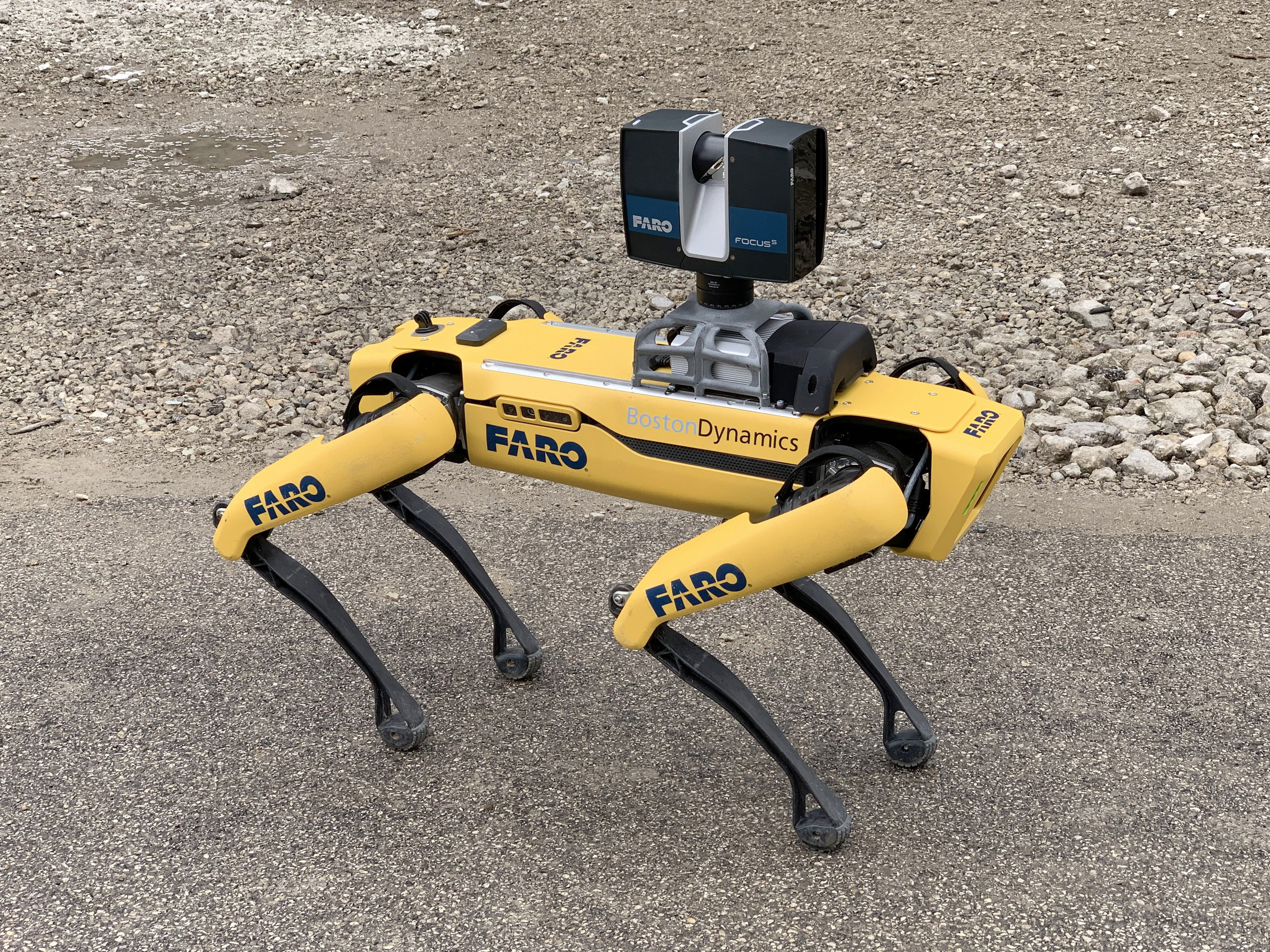Meet Trek, With Autonomous Scanning and Data Collection Super Powers
The combination of laser scanning and autonomous mobility delivers reality capture for building digital twins.

The FARO/Boston Dynamic collaboration produced Trek, a device tasked with automated scanning for repeatable data collection. Image Courtesy of FARO
Latest News
September 2, 2020
What do you get when you combine a laser scanner with a robot capable of remote data capture? You get Trek, a fully autonomous 3D mobile scanning device capable of remotely monitoring the progress and condition of commercial construction projects or creating digital twins of a manufacturing floor, among emerging use cases.
FARO, a leader in laser scanning technology, teamed up with robotics trailblazer Boston Dynamics on Trek, which combines the scanning speed and accuracy of the FARO Focus Laser Scanner with Spot, the quadruped robot capable of doing remote and autonomous data capture in challenging environments. Aimed initially at construction applications to verify progress and quality on job sites, Trek could also be tapped for other potential markets and applications that could benefit from automated scanning workflows or remote scanner operations, including the creation of digital twins of manufacturing facilities and for disaster mitigation purposes, FARO officials say.
FARO had been researching how to marry its scanning technology with a robot when in May 2019, Boston Dynamics officially launched Spot as a commercial product. It was the quadruped design of Spot that led the firm to seek a partnership as it would solve challenges navigating tough conditions like stairs and other obstructions, officials say.
While the use of 3D scanners in construction has grown over the years, the accuracy of the process is heavily reliant on repeatability, which means attention to scan settings, the location of the scanner, and the on-going activity during the scan. Because the scanning process is not highly interactive, companies often rely on less experienced operators. Yet inefficiencies can occur or scan quality can be compromised due to lack of knowledge or experience, which can result in not choosing the best location, using the wrong settings, or capturing people as part of the scan.
FARO Trek, on the other hand, automates this process, providing an assist to less experienced workers who can work off a pre-programmed guide. Spot’s Autowalk feature is used to create a repeated, automated scanning workflow, which ensures the information collected is the same each time and enhancing analysis and reporting.
“Someone experienced in laser scanning can be responsible for ensuring the proper settings are used, the best locations are selected, and then the scan can be run without needing to tie up an operator,” a FARO official explains. “The result is that customers are able to capture consistent and better quality data with less labor.”
By leveraging FARO’s scanner API and Spot’s integrated sensors, FARO was able to create a reality capture experience that goes beyond what’s able to be captured when scanning on a tripod. In addition, customers can document true as-built site conditions in a repeatable fashion and the high-frequency point cloud data collected is automatically aligned, making it easier to continuously update a digital twin, whether that’s for a construction site or a manufacturing floor.
Here’s a look at Boston Dynamics’ Spot robot performing on-site inspections.
More FARO Technologies Coverage
Subscribe to our FREE magazine, FREE email newsletters or both!
Latest News
About the Author
Beth Stackpole is a contributing editor to Digital Engineering. Send e-mail about this article to DE-Editors@digitaleng.news.
Follow DE





